PB2 residue 271 plays a key role in enhanced polymerase activity of influenza A viruses in mammalian host cells
- PMID: 20181719
- PMCID: PMC2863787
- DOI: 10.1128/JVI.02642-09
PB2 residue 271 plays a key role in enhanced polymerase activity of influenza A viruses in mammalian host cells
Abstract
The direct infection of humans with highly pathogenic avian H5N1 influenza viruses has suggested viral mutation as one mechanism for the emergence of novel human influenza A viruses. Although the polymerase complex is known to be a key component in host adaptation, mutations that enhance the polymerase activity of avian viruses in mammalian hosts are not fully characterized. The genomic comparison of influenza A virus isolates has identified highly conserved residues in influenza proteins that are specific to either human or avian viruses, including 10 residues in PB2. We characterized the activity of avian polymerase complexes containing avian-to-human mutations at these conserved PB2 residues and found that, in addition to the E627K mutation, the PB2 mutation T271A enhances polymerase activity in human cells. We confirmed the effects of the T271A mutation using recombinant WSN viruses containing avian NP and polymerase genes with wild-type (WT) or mutant PB2. The 271A virus showed enhanced growth compared to that of the WT in mammalian cells in vitro. The 271A mutant did not increase viral pathogenicity significantly in mice compared to that of the 627K mutant, but it did enhance the lung virus titer. Also, cell infiltration was more evident in lungs of 271A-infected mice than in those of the WT. Interestingly, the avian-derived PB2 of the 2009 pandemic H1N1 influenza virus has 271A. The characterization of the polymerase activity of A/California/04/2009 (H1N1) and corresponding PB2 mutants indicates that the high polymerase activity of the pandemic strain in mammalian cells is, in part, dependent on 271A. Our results clearly indicate the contribution of PB2 amino acid 271 to enhanced polymerase activity and viral growth in mammalian hosts.
Figures
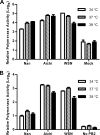

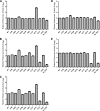
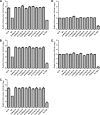

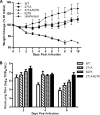

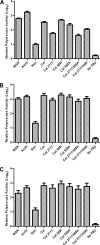
Similar articles
-
Identification of Influenza A Virus PB2 Residues Involved in Enhanced Polymerase Activity and Virus Growth in Mammalian Cells at Low Temperatures.J Virol. 2015 Aug;89(15):8042-9. doi: 10.1128/JVI.00901-15. Epub 2015 May 27. J Virol. 2015. PMID: 26018156 Free PMC article.
-
Amino acid substitutions in polymerase basic protein 2 gene contribute to the pathogenicity of the novel A/H7N9 influenza virus in mammalian hosts.J Virol. 2014 Mar;88(6):3568-76. doi: 10.1128/JVI.02740-13. Epub 2014 Jan 8. J Virol. 2014. PMID: 24403592 Free PMC article.
-
Virulence and genetic compatibility of polymerase reassortant viruses derived from the pandemic (H1N1) 2009 influenza virus and circulating influenza A viruses.J Virol. 2011 Jul;85(13):6275-86. doi: 10.1128/JVI.02125-10. Epub 2011 Apr 20. J Virol. 2011. PMID: 21507962 Free PMC article.
-
Progress in identifying virulence determinants of the 1918 H1N1 and the Southeast Asian H5N1 influenza A viruses.Antiviral Res. 2008 Sep;79(3):166-78. doi: 10.1016/j.antiviral.2008.04.006. Epub 2008 May 23. Antiviral Res. 2008. PMID: 18547656 Free PMC article. Review.
-
H5N1 2.3.4.4b: a review of mammalian adaptations and risk of pandemic emergence.J Gen Virol. 2025 Jun;106(6):002109. doi: 10.1099/jgv.0.002109. J Gen Virol. 2025. PMID: 40465371 Free PMC article. Review.
Cited by
-
The PB2 I714S mutation influenced mammalian adaptation of the H3N2 canine influenza virus by interfering with nuclear import efficiency and RNP complex assembly.Emerg Microbes Infect. 2024 Dec;13(1):2387439. doi: 10.1080/22221751.2024.2387439. Epub 2024 Aug 14. Emerg Microbes Infect. 2024. PMID: 39139051 Free PMC article.
-
Characteristics of the first H16N3 subtype influenza A viruses isolated in western China.Transbound Emerg Dis. 2020 Jul;67(4):1677-1687. doi: 10.1111/tbed.13511. Epub 2020 Apr 7. Transbound Emerg Dis. 2020. PMID: 32266788 Free PMC article.
-
Novel residues in avian influenza virus PB2 protein affect virulence in mammalian hosts.Nat Commun. 2014 Oct 7;5:5021. doi: 10.1038/ncomms6021. Nat Commun. 2014. PMID: 25289523 Free PMC article.
-
Analysis of recombinant H7N9 wild-type and mutant viruses in pigs shows that the Q226L mutation in HA is important for transmission.J Virol. 2014 Jul;88(14):8153-65. doi: 10.1128/JVI.00894-14. Epub 2014 May 7. J Virol. 2014. PMID: 24807722 Free PMC article.
-
Determination of the vRNA and cRNA promoter activity by M segment-specific non-coding nucleotides of influenza A virus.RNA Biol. 2021 May;18(5):785-795. doi: 10.1080/15476286.2020.1864182. Epub 2020 Dec 23. RNA Biol. 2021. PMID: 33317417 Free PMC article.
References
-
- Almond, J. W. 1977. A single gene determines the host range of influenza virus. Nature 270:617-618. - PubMed
-
- Butler, D. 2006. Family tragedy spotlights flu mutations. Nature 442:114-115. - PubMed
-
- Claas, E. C., A. D. Osterhaus, R. van Beek, J. C. De Jong, G. F. Rimmelzwaan, D. A. Senne, S. Krauss, K. F. Shortridge, and R. G. Webster. 1998. Human influenza A H5N1 virus related to a highly pathogenic avian influenza virus. Lancet 351:472-477. - PubMed
-
- Dawood, F. S., S. Jain, L. Finelli, M. W. Shaw, S. Lindstrom, R. J. Garten, L. V. Gubareva, X. Xu, C. B. Bridges, and T. M. Uyeki. 2009. Emergence of a novel swine-origin influenza A (H1N1) virus in humans. N Engl. J. Med. 360:2605-2615. - PubMed
Publication types
MeSH terms
Substances
Grants and funding
LinkOut - more resources
Full Text Sources
Miscellaneous

